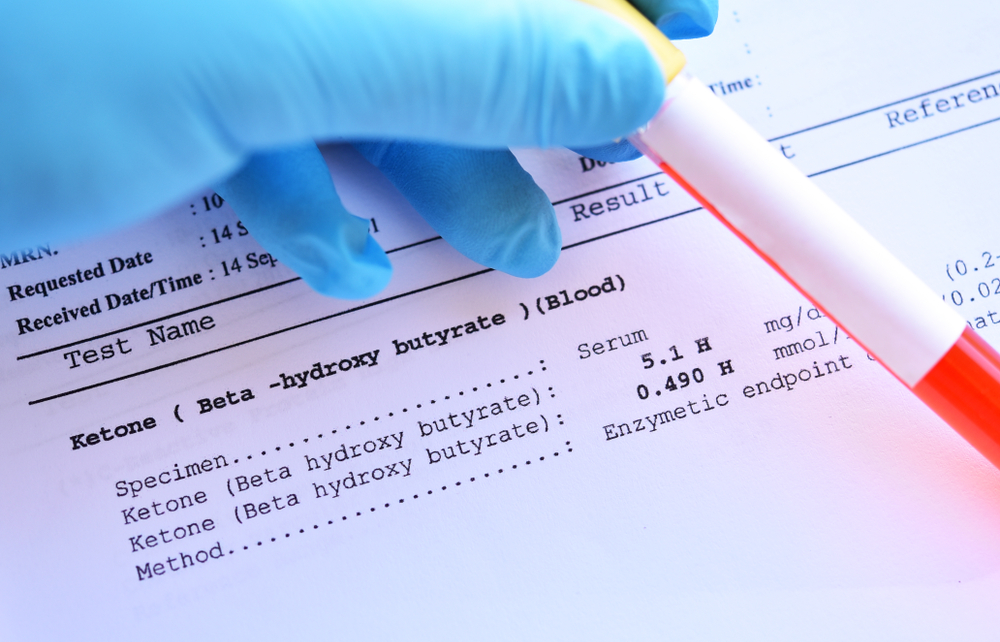Ketosis and ketoacidosis have similarity in their names, but they are entirely different terms that may be confusing to people. In fact, some people may actually think that talks about the ketogenic diet actually refers to ketoacidosis. Ketoacidosis or diabetic ketoacidosis is a complication of Type 1 Diabetes mellitus. It is a leading cause of death among individuals with type 1 diabetes mellitus. This complication involves the presence of extremely high levels of ketones in the blood.
Ketoacidosis is usually life-threatening and can affect organ function. In ketoacidosis, the body breaks down fats and proteins very quickly, and the resulting increase in acidity of the blood is what is responsible for the severe health complications that occur. While ketoacidosis is an emergency, it has been reported that it will take some time before becoming very serious. Diabetic ketoacidosis is preventable and treatable.
Ketosis, on the other hand, is not harmful to the body. It simply refers to the presence of ketones – substances produced when the body burns fat. Ketosis can be brought about by fasting and consuming meals with low carbohydrate content. The ketogenic diet uses the state of ketosis as a means to burn fat. With the increase in obesity around the world, so many people prefer to make use of low carbohydrate meals to promote weight loss. Such persons are said to be in a state of nutritional ketosis.
Usually, the human body burns sugar, and this is used to provide energy, but in a state of ketosis, this process does not occur. The body burns fat as its primary fuel instead of sugar. The reason for this switch is that the carbohydrate intake is not enough to meet the energy requirements of the body. The ketones produced during ketosis serve as an energy source for the brain.
Is There Any Difference Between Ketosis and Ketoacidosis?
- Effect on the body
From the definitions of both terms mentioned earlier, it clearly shows that there may be some link between ketosis and ketoacidosis. One thing that stands out is that both ketosis and ketoacidosis involves the body being in a state of ketosis. The major differentiating factor, however, is that while ketosis is entirely harmless, the same cannot be said for ketoacidosis.
While ketosis is a natural process that can be brought on by an individual on the keto diet, ketoacidosis is dangerous. In diabetic ketoacidosis, the blood is acidic due to the dangerously high levels of ketones present in the blood. Again, ketoacidosis is more common in people with type 1 diabetes mellitus, especially in those who do not get enough insulin.
- Triggers
Both ketosis and ketoacidosis also have different triggers. Ketosis may be brought about by minimizing carbohydrate consumption. By eating a low carb diet, the glycogen stores in the body are reduced. The reduction in glycogen level is accompanied by a decline in the level of insulin. When ketosis is achieved, the body releases fatty acids from fat stores within the body. The fat is then converted into ketones which is utilized as fuel.
Ketoacidosis is triggered by a decrease in the level of insulin. Low production of insulin will make the body incapable of moving sugar into the cells. In the end, energy production is reduced. An illness such as urinary tract infections and even pneumonia can also trigger diabetic ketoacidosis. These illnesses may cause the release of large amounts of insulin countering hormones such as cortisol. These insulin countering hormones may then act to cause diabetic ketoacidosis.
- Symptoms
Some of the symptoms that are linked with diabetic ketoacidosis include exhaustion, increased blood glucose level, frequent passing of urine, increased thirst, and increased level of ketones in the urine. These symptoms appear initially, but over time, more severe symptoms may develop. Some of these severe symptoms include confusion, respiratory problems, vomiting, and even loss of consciousness.
The symptoms associated with being in a ketotic state include fatigue, mood swings, high risk of infection, and memory problems. These symptoms are usually caused by malnutrition. An individual can become malnourished in a state of ketosis because of the nutritional imbalances that may arise. There have also been reports that ketosis may cause headaches, weight loss, and bad breath.
Ketosis vs. Ketoacidosis: The Risks
The risk of developing diabetic ketoacidosis is more in persons with type 1 diabetes, but it can also occur in persons with type 2 diabetes, but this is very rare. It is also prevalent in people who smoke or those addicted to alcohol. There are even certain medications that are implicated in causing DKA. Age, stressful conditions, and previous ill health have also been mentioned as factors that increase the risk of diabetic ketoacidosis.
For diabetic ketoacidosis, it is important to remember that it is a medical emergency and should be treated as such. Persons who have the risk of developing diabetic ketoacidosis or those who have the symptoms should discuss with a health professional. Treatment of ketoacidosis should also be administered immediately. If left untreated, DKA can affect the normal functioning of the body. Fatal complications like severe dehydration, coma, and death may result.
Forcing the body to remain in the state of ketosis is very common among people who engage in the keto diet. The keto diet is a popular method that is used to achieve weight loss. The ketotic state is reportedly considered as safe, but it also has some drawbacks that are worth considering. One of the side effects of ketosis is that it lowers insulin levels. There is also decreased metabolism, and there could be increased weight gain.
Some sources also refer to ketosis as a mild form of ketoacidosis. In fact, there are reports that in patients with type 1 diabetes mellitus, ketosis can trigger ketoacidosis, which is life-threatening. Ketosis is also risky for individuals who have rare metabolic conditions involving deficiency of enzymes. The ketones produced by ketosis in such individuals will accumulate since the body’s ability to make use of ketones is affected.
Conclusion
Although ketosis and ketoacidosis both contain the word “keto,” they do not refer to the same condition or state of the body. Ketosis is the metabolic state that makes the ketogenic diet successful. It is a normal metabolic process that forces the body to rely on fat stores for energy production rather than on sugar or glucose stores.
There are, however, similarities between ketosis and ketoacidosis. One of such similarities is that they both involve entering the ketotic state. The difference is that for ketoacidosis, entering ketosis is not deliberate, and several other factors may be involved.
Ketosis is not considered to be harmful to the body. This is one of the reasons why most persons on the ketogenic diet prefer to remain in ketosis to stimulate weight loss. The main differences between ketosis and ketoacidosis is based on the effect both have on the body, the differences in what can cause both states and the different symptoms.
While ketosis is generally considered safe and normal, ketoacidosis is deadly if left untreated. It has been identified as one of the major causes of death in individuals with diabetes, especially type 1 diabetes mellitus. Such individuals should seek professional help if the symptoms of DKA start to develop, and before they start the keto diet.



